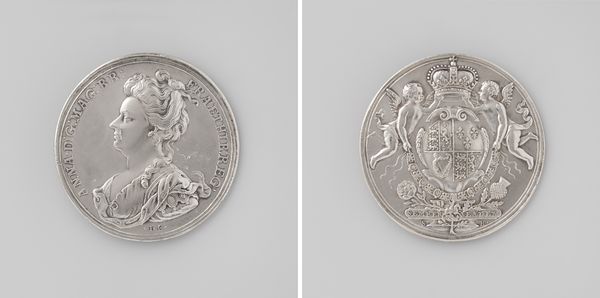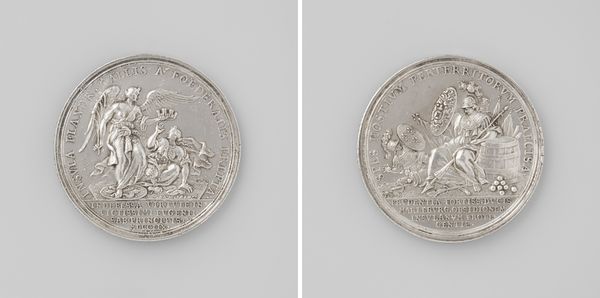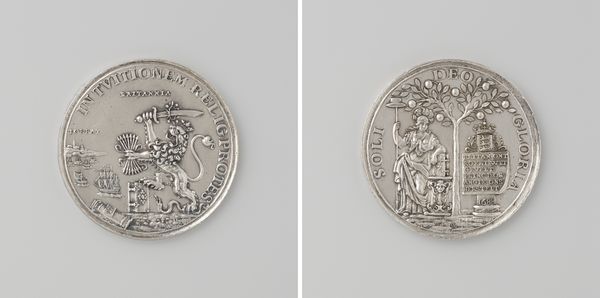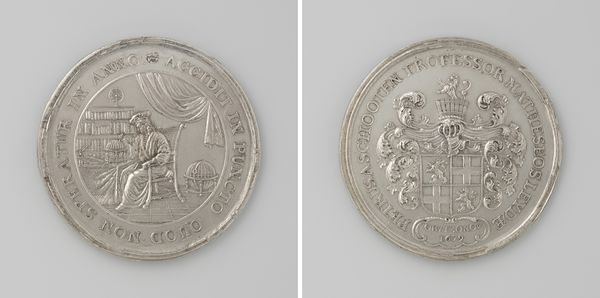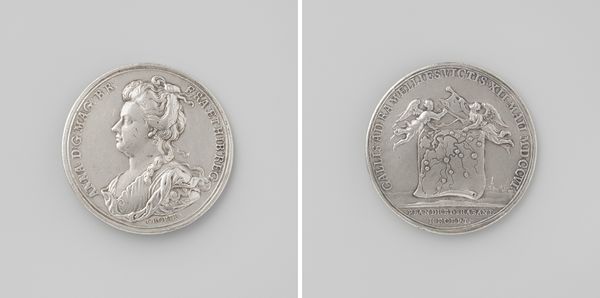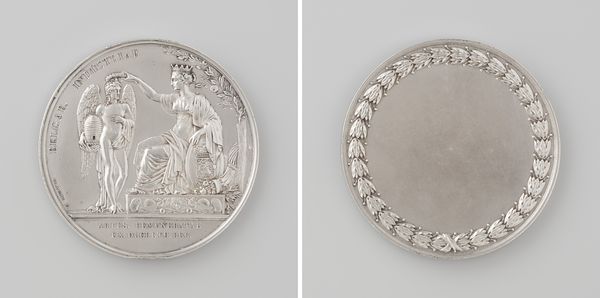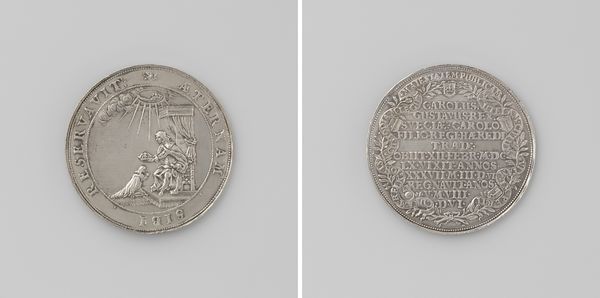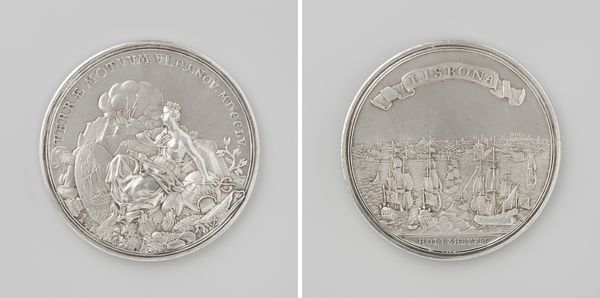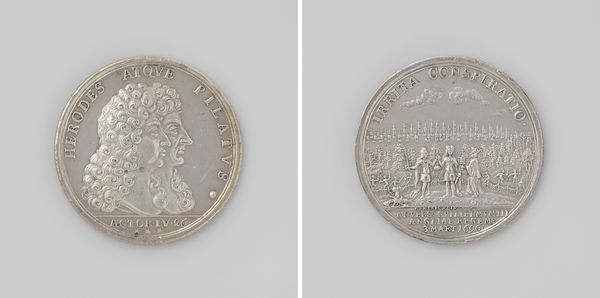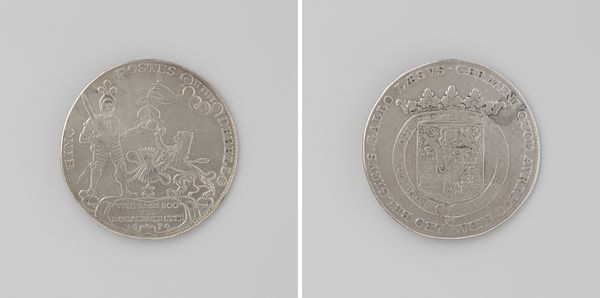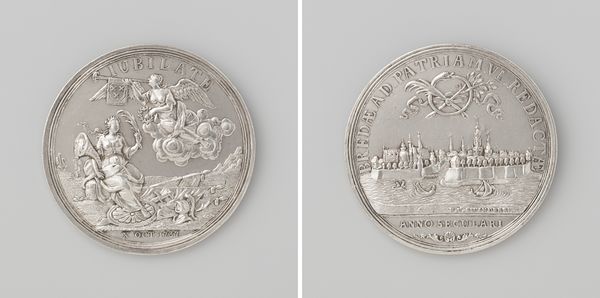
print, metal, engraving
#
baroque
#
dutch-golden-age
# print
#
metal
#
old engraving style
#
decorative-art
#
engraving
Dimensions: diameter 5.4 cm, weight 23.85 gr
Copyright: Rijks Museum: Open Domain
This guild badge of Jan van der Spring, an overman, was likely made in Amsterdam, from silver, sometime in the 1700s. The material is paramount here: silver, a valuable metal, immediately communicates status and importance. It would have begun as a raw ingot, and then been skillfully worked, likely using techniques like hammering, engraving, and chasing to create its delicate design. The chasing is particularly skillful. See the fine lines that define the coat-of-arms, complete with cherubs and birds – all achieved through painstaking labor. It is also critical to understand the badge's function. It wasn't just decorative; it was a symbol of membership in the Turfdragersgilde – the guild of turf carriers, who supplied fuel to the city. Guilds were powerful organizations that regulated trade and protected their members' interests. This badge, therefore, represents a system of labor, politics, and consumption. It is a reminder that even seemingly simple objects can be deeply embedded in social structures. By looking closely at the material and the making, we can appreciate the badge's cultural significance beyond its aesthetic appeal.
Comments
No comments
Be the first to comment and join the conversation on the ultimate creative platform.

